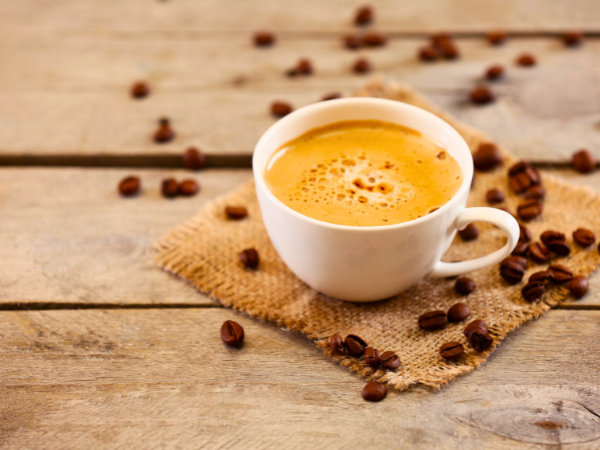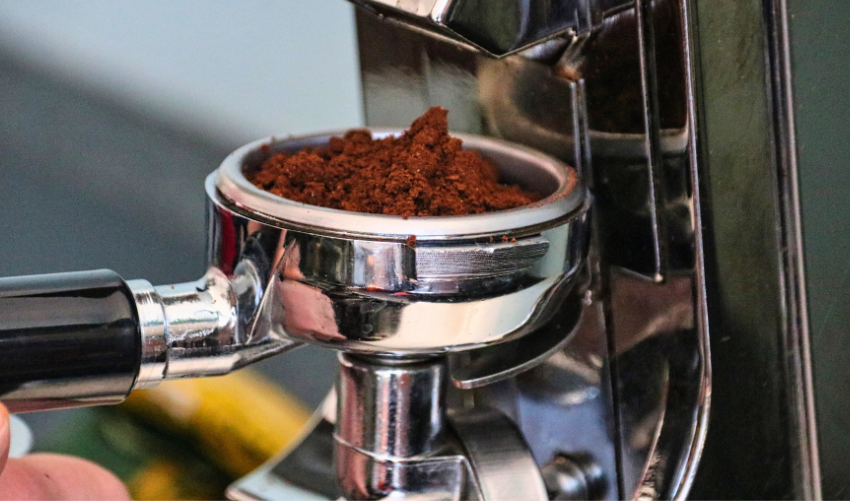In this guide, we’ll dive into the most common coffee problems you might encounter and provide simple solutions to fix them. You deserve a perfect cup of coffee that makes your mornings brighter and your afternoons more enjoyable.
Brewing Basics
Troubleshooting your brew can help you enjoy the perfect cup of coffee. Understanding brewing basics is key to solving common coffee problems.
Water Quality
Water quality plays a big role in coffee flavor. Using fresh, clean water is essential. Here are some tips:
- Use filtered water for better taste.
- Avoid distilled or softened water.
- Check the temperature; it should be between 195°F to 205°F.
Coffee Grind Size
The grind size affects how the coffee extracts. Different brewing methods require different grind sizes:
| Brewing Method | Grind Size |
|---|---|
| French Press | Coarse |
| Pour Over | Medium |
| Espresso | Fine |
Coffee-to-water Ratio
The right coffee-to-water ratio is important for flavor. A common guideline is:
- Use 1 to 2 tablespoons of coffee per 6 ounces of water.
- Adjust according to your taste preference.
Brewing Time
Brewing time influences coffee strength. Each method has its own recommended time:
- French Press: 4 minutes
- Pour Over: 2-3 minutes
- Espresso: 25-30 seconds
Equipment Maintenance
Clean equipment leads to better tasting coffee. Follow these steps:
- Wash your coffee maker regularly.
- Descale machines every few months.
- Replace coffee filters as needed.

Sour Coffee
Sour coffee can ruin your morning. It often tastes sharp and unbalanced. Understanding why your brew turns sour can help you enjoy a better cup. Many factors contribute to this issue. Let’s explore the common causes of sourness and how to fix it.
Causes Of Sourness
Sour coffee usually comes from two main issues: under-extraction and poor coffee quality. Here are some key reasons for sourness:
- Under-extraction: This occurs when water does not extract enough flavor from the coffee grounds. It often happens if the brewing time is too short.
- Water Temperature: If the water is too cool, it may not extract flavors well. Ideal brewing temperature is between 195°F and 205°F (90°C – 96°C).
- Coffee Grind Size: A grind that is too coarse can lead to under-extraction. Finer grinds extract flavors better.
- Quality of Coffee Beans: Low-quality beans may have a sour taste. Fresh, high-quality beans are crucial for good coffee.
- Brewing Method: Some methods, like pour-over, require precise control. Improper technique can lead to sourness.
Here is a table summarizing the causes of sour coffee:
| Cause | Description |
|---|---|
| Under-extraction | Insufficient flavor extraction due to short brewing time. |
| Water Temperature | Cool water fails to extract flavors effectively. |
| Coffee Grind Size | Coarse grind leads to under-extraction. |
| Quality of Coffee Beans | Low-quality beans may taste sour. |
| Brewing Method | Poor technique can affect flavor balance. |
Fixing Sour Brew
Fixing sour coffee is often straightforward. Start by adjusting the brewing time. A longer brew can help extract more flavor.
- Increase Brewing Time: Try brewing for 30 seconds to 1 minute longer.
- Check Water Temperature: Use a thermometer to ensure your water is between 195°F and 205°F.
- Adjust Grind Size: Experiment with a finer grind to improve extraction.
- Use Quality Beans: Always choose fresh, high-quality coffee beans.
- Refine Brewing Method: Learn proper techniques for your brewing method. Follow guides or videos for best results.
Follow these steps to enhance your coffee’s taste. Small adjustments can lead to a richer, more balanced brew. Enjoy your perfect cup of coffee without the sour notes!
Bitter Coffee
Bitter coffee can ruin your morning routine. It’s not just unpleasant; it can also make you dread your daily cup. Understanding the reasons behind bitterness helps you troubleshoot this common coffee issue. Knowing how to reduce bitterness can lead to a smoother, more enjoyable brew.
Reasons For Bitterness
Bitterness in coffee often comes from several factors. Understanding these factors can help you make better coffee. Here are the main reasons:
- Over-extraction: Brewing coffee for too long extracts unwanted flavors.
- High temperature: Water that is too hot can scorch the coffee grounds.
- Dark roast: Darker beans have a naturally bitter taste.
- Old coffee: Stale beans lose flavor and can taste bitter.
- Grind size: A fine grind can lead to over-extraction.
Here’s a table summarizing these causes:
| Cause | Explanation |
|---|---|
| Over-extraction | Brewing too long pulls bitter compounds. |
| High temperature | Scorches coffee, bringing out bitterness. |
| Dark roast | More bitter flavors develop in darker beans. |
| Old coffee | Stale beans lose taste quality, resulting in bitterness. |
| Grind size | Too fine a grind can lead to over-extraction. |
Identifying these causes is the first step to making better coffee.
How To Reduce Bitterness
There are several ways to reduce bitterness in your coffee. By making small adjustments, you can enjoy a smoother cup. Here are effective methods:
- Adjust brewing time: Brew for the recommended time to avoid over-extraction.
- Control water temperature: Use water between 195°F and 205°F.
- Try a lighter roast: Choose medium or light roast beans for less bitterness.
- Use fresh coffee: Buy whole beans and grind them just before brewing.
- Experiment with grind size: Use a coarser grind to reduce over-extraction.
Follow these steps for a better cup:
- Measure coffee and water accurately.
- Set a timer for brewing.
- Monitor the water temperature.
- Store coffee beans in an airtight container.
By making these changes, you can greatly improve the flavor of your coffee.
Weak Coffee
Weak coffee can be a frustrating experience. It often lacks the rich flavor and aroma that many coffee lovers crave. Understanding why your coffee is weak helps you find the right solutions.
Identifying Weakness
Weak coffee usually has a bland taste and little aroma. Several factors contribute to this problem. Start by checking the following:
- Bean Quality: Poor quality beans can lead to weak coffee.
- Grind Size: A grind that is too coarse may not extract enough flavor.
- Brew Time: Short brewing times can result in under-extraction.
- Water Temperature: Water that is too cold does not extract flavor well.
- Coffee-to-Water Ratio: Too much water dilutes the coffee.
Use the following table to understand the ideal coffee-to-water ratios:
| Type of Brew | Coffee Amount (grams) | Water Amount (milliliters) |
|---|---|---|
| Espresso | 18 | 36 |
| Drip Coffee | 30 | 500 |
| French Press | 45 | 750 |
After checking these factors, you can pinpoint the cause of your weak coffee.
Strengthening Your Brew
Now that you know the causes of weak coffee, let’s explore how to fix it. Adjusting a few key elements can enhance your coffee’s flavor.
- Choose Quality Beans: Invest in fresh, high-quality coffee beans.
- Adjust Grind Size: Use a finer grind for stronger coffee.
- Increase Brew Time: Allow your coffee to brew longer for better extraction.
- Use Hotter Water: Aim for water temperatures between 195°F and 205°F.
- Correct Coffee-to-Water Ratio: Follow the table above to measure accurately.
Experiment with these adjustments to find what works best for your taste.
Remember, the brewing process is an art. Each step influences the final cup. Test different methods and enjoy the journey to perfect coffee.
Over-extracted Coffee
Coffee brewing can be tricky. Sometimes, your cup of coffee tastes bitter and harsh. This problem is often due to over-extraction. Over-extraction happens when coffee grounds are brewed too long. Water pulls too many flavors from the coffee. This can ruin your coffee experience.
Signs Of Over-extraction
Identifying over-extraction can help you save your brew. Here are some common signs:
- Bitter Taste: The coffee tastes sharp and unpleasant.
- Dark Color: The liquid appears very dark, almost black.
- Dry Mouth Feel: The coffee leaves a dry sensation in your mouth.
- Unpleasant Aftertaste: You may notice a lingering, bitter aftertaste.
Over-extraction can also affect the aroma. If your coffee smells burnt or overly strong, it might be over-extracted. Brewing time and water temperature play a big role. Here’s a quick table to show the impact:
| Brewing Method | Ideal Brew Time | Signs of Over-extraction |
|---|---|---|
| French Press | 4 minutes | Bitter, dry taste |
| Pour Over | 3-4 minutes | Dark color, burnt smell |
| Espresso | 25-30 seconds | Sharp flavor, unpleasant aftertaste |
Solutions To Over-extraction
Fixing over-extraction is easier than it seems. Here are some effective solutions:
- Adjust Brew Time: Shorten the brewing time. For French press, try 3 minutes.
- Lower Water Temperature: Use cooler water. Ideal temperature is between 195°F and 205°F.
- Use Coarser Grind: A coarser grind slows extraction. This helps balance flavors.
- Change Coffee Ratio: Use less coffee. A good starting point is 1:15 coffee to water ratio.
Experiment with these changes. Every coffee bean is unique. Adjusting your method can lead to a better cup. Tasting your coffee regularly helps you find the right balance. Enjoy brewing!
Under-extracted Coffee
Under-extracted coffee is a common issue many coffee lovers face. It occurs when water does not extract enough flavor from the coffee grounds. This can lead to a weak, sour, or overly acidic taste. Understanding how to identify and fix this problem can improve your coffee experience.
Detecting Under-extraction
Identifying under-extraction in your brew is essential for making better coffee. Here are some signs to watch for:
- Weak Flavor: The coffee tastes bland or watery.
- Sour Taste: A sharp acidity that doesn’t feel balanced.
- Short Brew Time: If brewing time is less than recommended.
- Pale Color: The coffee lacks richness in color.
To help you further, here’s a quick comparison table:
| Signs of Under-extraction | Possible Causes |
|---|---|
| Weak Flavor | Not enough contact time between water and coffee. |
| Sour Taste | Water temperature too low. |
| Short Brew Time | Grind size is too coarse. |
| Pale Color | Insufficient extraction from coffee grounds. |
By recognizing these signs, you can begin to understand if your coffee is under-extracted.
Correcting Under-extraction
Correcting under-extraction involves a few simple adjustments. Start by examining your brewing method. Here are some effective solutions:
- Adjust the Grind Size: Use a finer grind. Finer coffee grounds increase the surface area for extraction.
- Increase Brew Time: Let your coffee steep longer. This allows more flavor to develop.
- Check Water Temperature: Ensure your water is between 195°F and 205°F. This range helps extract flavors better.
- Use the Right Coffee-to-Water Ratio: A common ratio is 1:15. That means 1 gram of coffee for every 15 grams of water.
Here’s a quick guide on brewing times for different methods:
| Brewing Method | Recommended Brew Time |
|---|---|
| French Press | 4 minutes |
| Pour Over | 3-4 minutes |
| Espresso | 25-30 seconds |
| Aeropress | 1-2 minutes |
By making these adjustments, you can improve your coffee’s flavor and avoid under-extraction. Enjoy your perfect cup!

